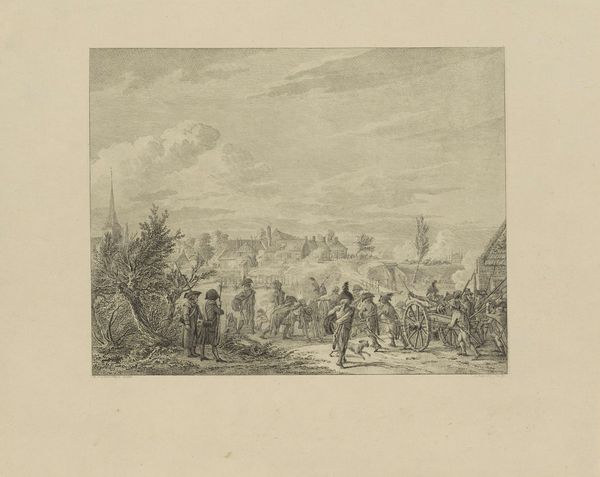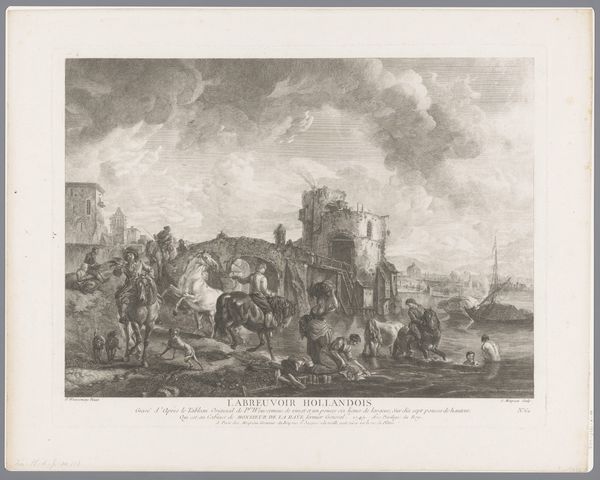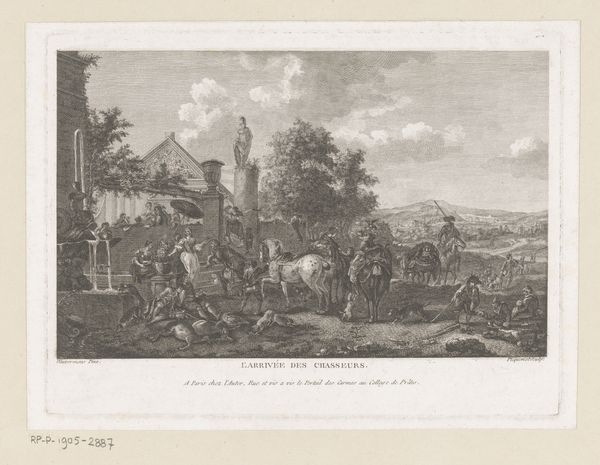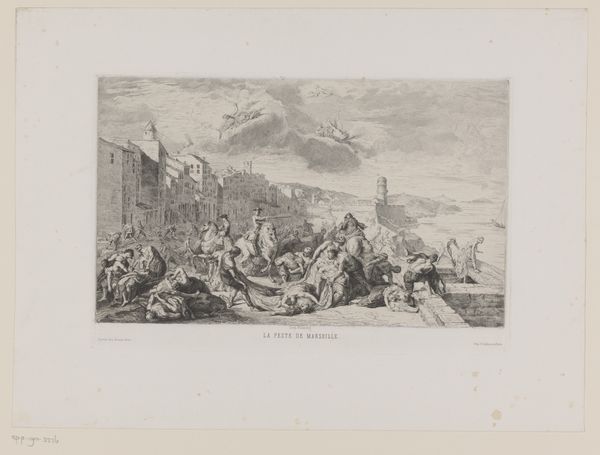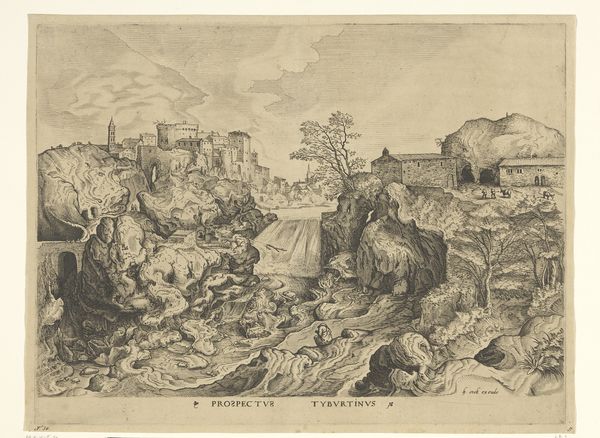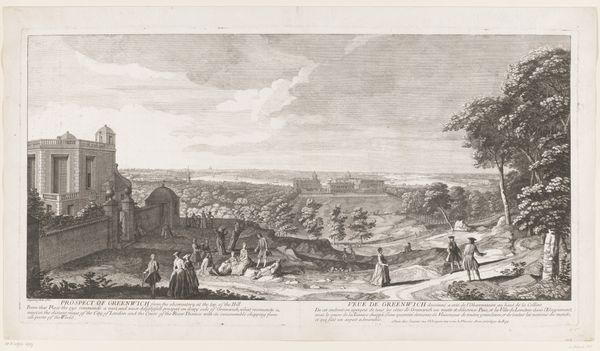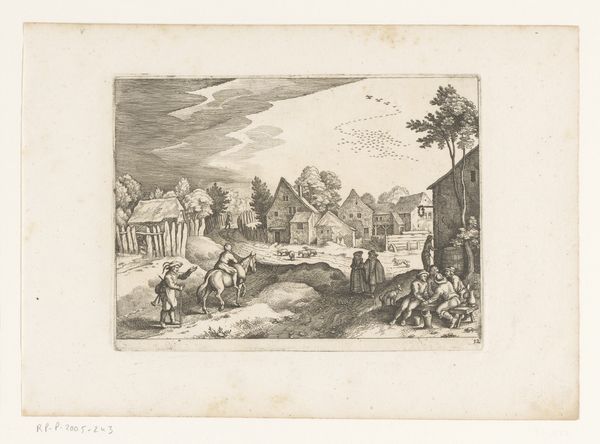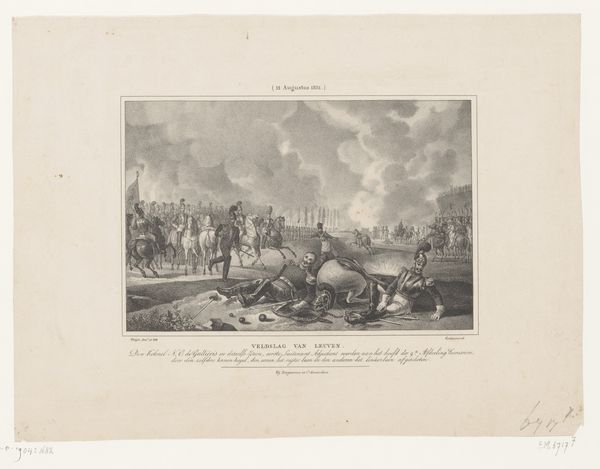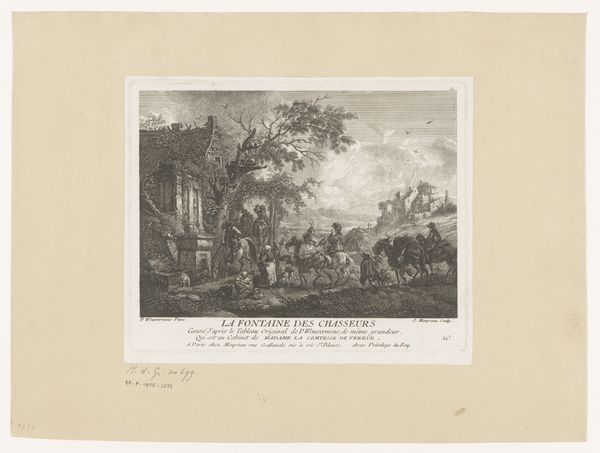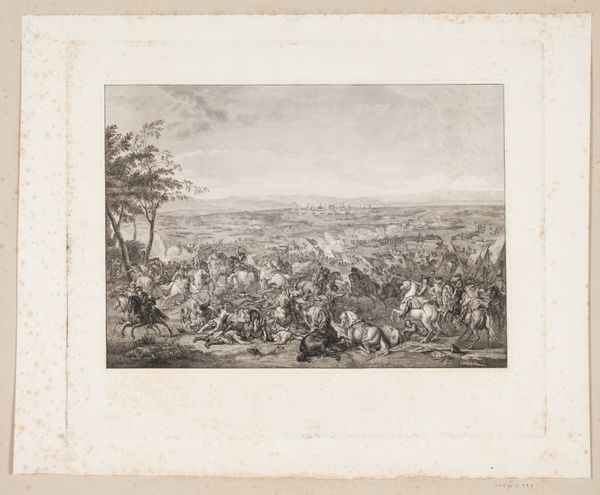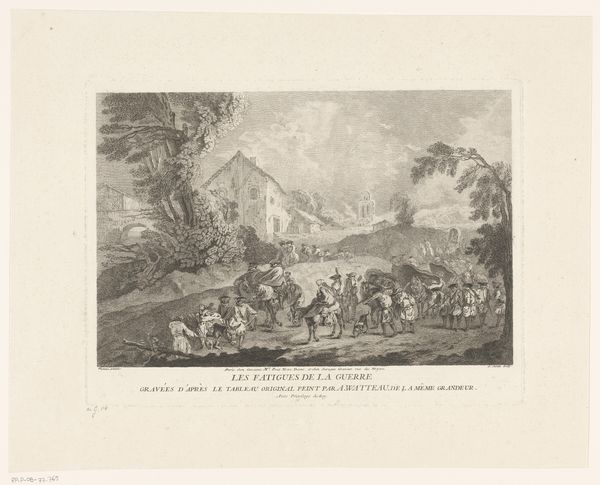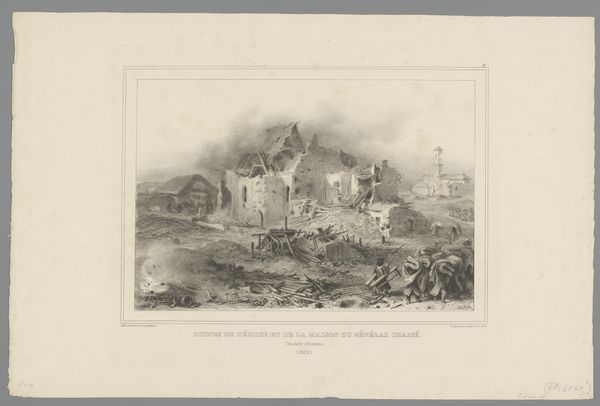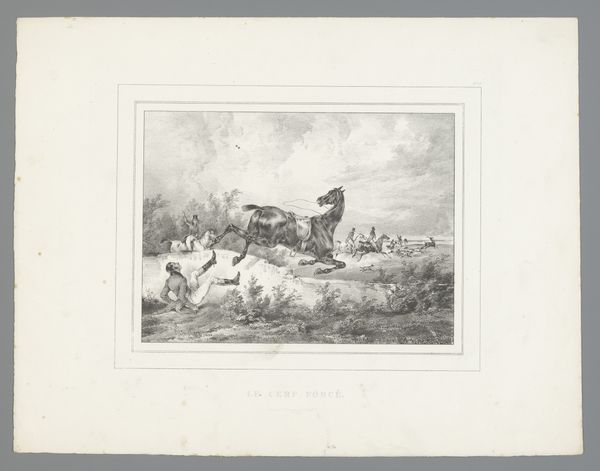
print, etching
#
baroque
# print
#
etching
#
landscape
#
cityscape
#
genre-painting
Dimensions: height 268 mm, width 391 mm
Copyright: Rijks Museum: Open Domain
Curator: We're looking at "View of Vincennes with Cows and Figures," an etching made circa 1727 by François Boucher, currently held at the Rijksmuseum. What's your first impression? Editor: It has a surprisingly tranquil, almost idealized, pastoral feeling for an etching. The tonal range is quite narrow, focused mostly on the greyscale, with detailed attention given to the cows. Curator: Absolutely. Boucher created this during a period of transition, moving away from traditional history painting toward more genre scenes that reflected contemporary life and pastoral settings— though "contemporary" for him, was entangled in royal court fantasies of what an idyll could be. The city of Vincennes itself had a lot of socio-economic tensions. How might this idealized representation of labor speak to it? Editor: Perhaps, Boucher uses the print medium here as a mode of documentation or semiotic interpretation of the world outside the court, translating direct observation into reproducible form, so he can further engage his patrons. We could say he is constructing a visual language through these carefully observed details and tones, for both, narrative and symbolical readings of the piece. Curator: Indeed. There is a political dimension inherent in genre-painting during the Baroque era. Who gets to be a subject for visual consumption? By placing commoners centrally, tending their cattle, Boucher elevated the quotidian. However, is he celebrating or romanticizing the situation? Editor: I would agree with your points regarding Baroque social critique here. In some sense, there’s certainly a degree of formal detachment. He keeps a structural, almost rigid formality in composition that somewhat pushes aside true intimate engagement. It flattens into artifice through medium selection, but an interesting and beautifully executed artifice nonetheless. Curator: A worthwhile debate for sure! He definitely uses an approach to both document and abstract lived realities through stylistic approaches of classic landscape. I believe what resonates is the artwork’s quiet assertion of a complex lived moment, frozen within social frameworks of class. Editor: I concur. Its lasting power then lies not merely in aesthetic pleasure, but the invitation it gives to continuously dissect our visual culture.
Comments
No comments
Be the first to comment and join the conversation on the ultimate creative platform.
